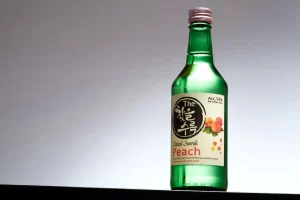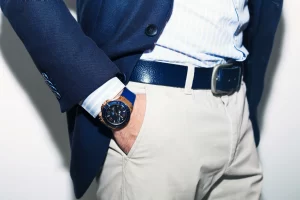Walk in style and tradition with geta shoes! Explore geta sandals, including unique tengu geta with one tooth. Find comfortable wooden clogs or browse trendy geta styles. Shop for geta sandals near you or discover the purpose of these iconic shoes.
Geta sandals, with their iconic one-tooth design, serve both fashion and function. Size 13 options are available, offering benefits like comfort and style. Learn about their history, pronunciation, and care. Explore where to buy or even make your own. Embrace the cultural significance and versatility of these Japanese sandals.
1. Completing the Look with Traditional Shoes
Did you realize that traditional Japanese shoes were imagined by the Chinese and afterward moved to Japan? Truly, this is valid as we realize that no look is finished except if you put on shoes, and the Japanese style is the same. Albeit savvy beauticians, for instance, pair Japanese kimonos with Dr. Martinez to look in vogue, you will require traditional Japanese shoes on the off chance that you are going for an exemplary style.
What’s more, the Geta shoes are the most renowned wooden shoes known as Geta, however, there are various kinds of traditional Japanese shoes and even the customary Japanese shoes. . So in case you’re searching for the best Japanese footwear for your outfit, here are the best and various sorts of wooden shoes and the basic things you need to know!
2. Customary Japanese Shoes for Ladies
We realize that footwear is the main piece of design. Everybody needs great and agreeable footwear. Especially ladies are more cognizant about their dressing if they are young ladies and searching for the best traditional Japanese Shoes. At that point, you are in the opportune spot we are examining here about Japanese shoes, how to purchase them, and their Reasonable cost and plans
3. Types of Traditional Japanese Sandals for Women
1. Waraji

Waraji are shoes woven from straw. The most customary material is rice straw. These shoes can likewise be worn with tabi, the customary Japanese split-toe socks. Ropes produced using similar material fold over the lower legs and tie the bottom safely to the foot. During the Edo Period, samurai and everyday people the same wore these pragmatic shoes. Nowadays, waraji are just worn for celebrations, cosplay, or every so often by Buddhist priests.
2. Geta

In the past, geta had the practical use of keeping your kimono off the ground and away from puddles, snow, and dirt. Over time they’ve become the more casual type of traditional shoes for women and most suitable for yukata, the light summer kimono. What all geta have in common is a wooden base, but there are tens of different types of geta. Here are a few of the most well-known ones.
3. Hiyori geta / Masa Geta

Hiyori geta are the work of art, regular geta. They normally have a rectangular base and two wooden teeth that run opposite to the base’s long side. These low geta were customarily worn in great climates. They can be lacquered with hued hanao (lashes) or incomplete, characteristic wood. Some advanced regular geta styles don’t have any teeth whatsoever, simply a wooden base. Wearing a tabi is discretionary.
4. Taka-Ashida Geta

Taka-ashida geta are like hiyori geta. These shoes were intended to be worn in a downpour and helpless climate, so their two teeth are exceptionally tall and flimsy. With the present cleared streets and road channels downplaying mud and puddles, there’s little requirement for taka-Ashida.
5. Ippon Geta / Tengu Geta

Geta with a solitary long tooth is nicknamed tengu geta, as the tengu evil spirit from Japanese folklore is typically portrayed wearing these. They take practice to have the option to stroll in and are generally held for entertainers, conventional moves, celebrations, or ensembles.
6. Pokkuri Geta / Okobo

Pokkuri geta has a gigantic base cut from a single piece of wood. The inside is vacant and may contain a little ring or tinkling noisemaker so the wearer makes sounds when they walk; pokkuri is a resemblance in sound for the sound these shoes make. These are women’s geta and now and again worn other than by maiko. Maiko’s geta are known as okobo. They are commonly worn with tabi.
7. Zori

Zori is the best choice for kimono, yet they can similarly be worn with yukata. These changed shoes can be created utilizing vinyl, plugs, brocade, or many current materials. Generally, zori is low yet present-day styles can have an establishment of contrasting heights. The more easygoing zori regularly have a dull or toned tie while the legitimate styles are white. Zori looks best with Tabi.
4. Are Geta Shoes Comfortable?
Today these shoes are generally famous at firecracker celebrations and other customary occasions, yet one thing hasn’t changed: With a shape somewhat like easygoing beachwear, they are as yet agreeable! Furthermore, in contrast to their slender elastic Western partners, zori and geta can be exceptionally excellent just as reasonable.
5. Instructions to Wear Geta
Summer in Japan is the season for celebrations, which implies it’s an ideal opportunity to slip into your most loved yukata (summer kimono), fold an obi scarf over your midsection, and slide your feet into a couple of customary Japanese geta shoes. In any case, exactly how would you wear these marvelous shoes without getting rankles? We have a few hints for you!
In case you’re accustomed to wearing flip-lemon, or straps, as they’re known in Australia, you’ll most likely wear geta shoes along these lines, with your feet driven into the highest point of the shoe and the centerpiece of the tie wedged flawlessly between your toes. This, notwithstanding, is nothing but bad (“NG” as individuals state in Japan) with regards to wearing conventional Japanese shoes.
All things considered, you should push your feet back a spot and leave a hole between the lash and the associating skin in the middle of your toes. Preferably, the hole should be sufficiently wide for the tip of your little finger to fit through.
6. For what reason Do Japanese Individuals Wear Geta Shoes?
After experiencing the verifiable development of the geta shoes, you would comprehend that there is a scope of reasons why Japanese individuals throughout the years have selected the geta shoes.
Above all else, the raised stage can add to the usefulness of this footwear, particularly when individuals are working through earth or mud. It was likewise a decent method to recognize individuals holding various situations in the public eye. In a more present-day setting, these shoes are utilized to finish the customary glance when you venture out in your yukata.
Conclusion
Geta, Japan’s iconic wooden sandals, have clacked down streets for centuries. More than footwear, they’re a cultural touchstone, elevating wearers both literally and figuratively. From their practical origins to their stylish adaptations, geta continues to bridge the gap between tradition and modern life. So, next time you hear their distinctive clatter, remember the rich history and cultural significance these unique shoes represent.




